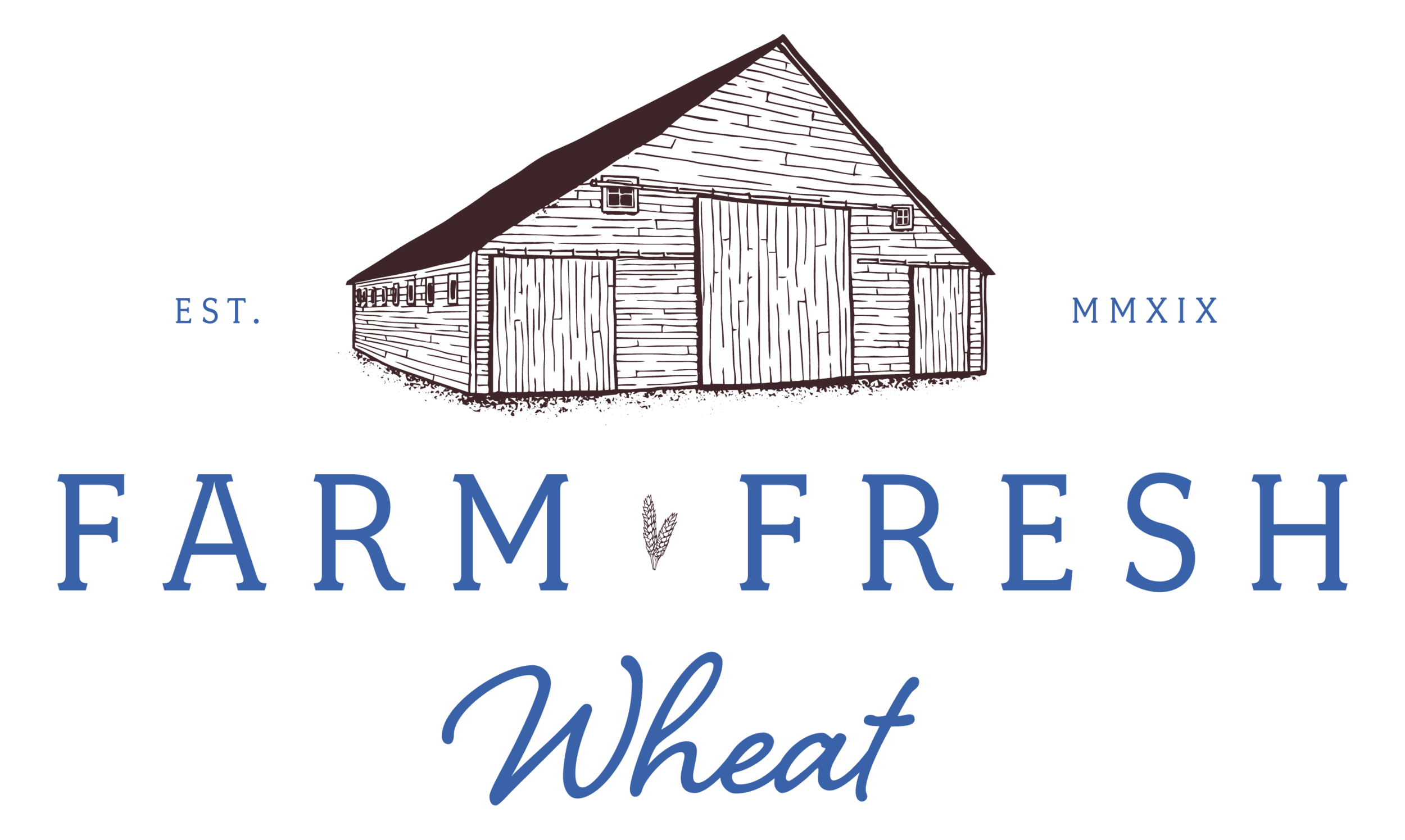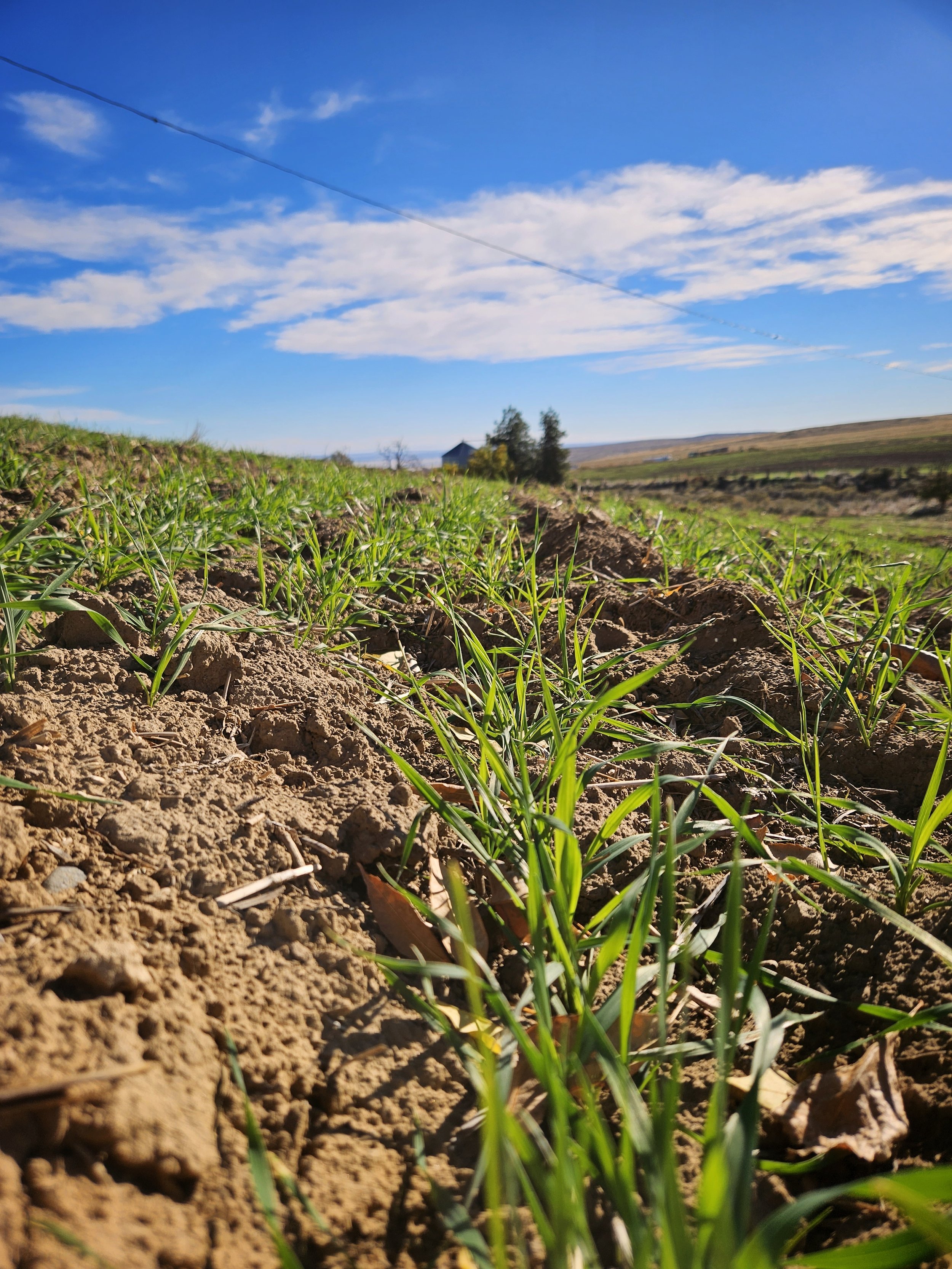Our Regenerative Journey: The Beginning
Hi Friend,
The engines of the airplane droned in my ears as I fastened my seat belt and flipped my Louis L’Amour book open. I tried to breathe deep as I felt racked with mom-guilt about leaving my sick farm boys with two sets of grandparents for a week.
I knew I needed to be with Kevin. I knew if we didn’t take the plunge now, it probably would never happen. But what I didn’t know is how much our weeklong trip would change the trajectory of the farm.
Where it all began:
Our first no-till wheat crop. The first step in our regenerative journey.
In December 2022, we flew to Phoenix, AZ for a Ranching for Profit school. Ranching For Profit is intensive workshop that helps participants transform their ranches in to sustainable businesses (think of an MBA in a week). Ranching is steeped in tradition, and while tradition makes for a great story, it is not always profitable or sustainable across multiple generations.
Kevin and I were in the process of finalizing the transfer of our family farm from Kevin’s dad to us, so we knew the easiest time to make changes would be at the beginning. We just didn’t quite know what changes needed to be made.
Day Four: Soil Health
Sitting with my workbook in my lap, I tried to stifle a laugh as I watched an uncomfortably funny nature documentary of a dung beetle rolling a dung ball to his home.
Slowly I started to connect the power of using cattle in harmony with nature. I started to see how some of the ranching practices we had been handed down in name of tradition worked against nature, creating frustration. I walked away from Day 4 knowing that our grazing and pasture management strategies needed fine-tuning. But Kevin walked away with an even larger idea…
The Regenerative Journey Begins:
The goal will be to get the soil looking less like mud and more the texture of chocolate cake. Cake texture is a sign up organic matter, aggregates, and healthy soil micro organisms.
As Kevin sat there watching the dung beetles and learning how grazing practices can rehabilitate rangeland, he began to have an even grander idea for the farm. What if the practices we were learning were applied to more than the pastures, what if they were applied to the wheat fields too?
As only God can do, I was sitting next to a rancher who was already implementing many of the practices Kevin was curious about. We sat with him at lunch to pick his brain, and walked away with a laundry list of books, podcasts, and consultants pertaining to regenerative agriculture.
What is regenerative agriculture? Regenerative agriculture focuses on improving soil health for better fertility and moisture retention using more natural practices.
In the last farm year, we have felt God pushing us in the direction of regenerative agriculture. You may have noticed that the fields look a little different on Instagram and Facebook. That’s because the first change we made is to stop tilling. Changing to regenerative agriculture is a slow, expensive process, so while we would like to make big changes really quick, we are moving at the speed of cash. After all, the tortoise wins the race, right?
We will be sharing more about our regenerative journey in the future, including the interesting observations we’re making on the farm (Kevin is a becoming quite the biologist). If you would like to follow up to get updates on the farm’s regenerative journey, please be sure to sign up below. You can also follow us on Facebook and Instagram at @farmfreshwheatwa to watch your wheat berries grow.
Happy Milling!
The Sieverkropps


